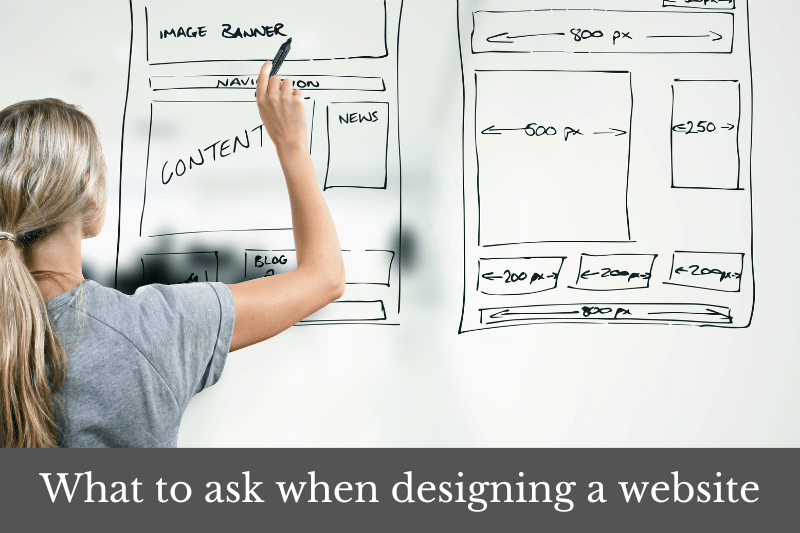Designing a website can be a daunting task, whether it’s for a personal blog or a business website. Asking the right questions during the design process can help ensure that the website meets the needs of its users and achieves its intended goals. Here are some questions to consider when designing a website.
What to ask when designing a website
What is the purpose of the website?
Before designing a website, it’s important to define its purpose. What is the website intended to accomplish? Is it to inform users about a product or service, generate leads, sell products, or provide entertainment? Understanding the purpose of the website will help guide the design process and ensure that the website meets its goals.
Who is the target audience?
Identifying the target audience is critical for designing a website that effectively reaches and engages its intended users. Who is the website aimed at? What are their needs, preferences, and behaviors? Understanding the target audience will help determine the design elements that will resonate with them and ensure that the website is user-friendly and accessible.
What content will be included on the website?
Once the purpose and target audience of the website have been identified, it’s time to determine what content will be included. Will the website contain text, images, videos, or interactive elements? How will the content be organized and presented on the website? Understanding the content that will be included on the website is critical for designing a website that is easy to navigate and visually appealing.
What is the desired user flow?
The user flow refers to the path that users will take as they interact with the website. What actions do you want users to take when they visit the website? What pages or sections of the website should users visit first? Mapping out the desired user flow will help ensure that the website is intuitive and easy to navigate.
What is the brand identity?
The brand identity refers to the personality, values, and messaging that the website should convey. What is the brand’s mission and values? What tone and style of messaging should the website use? Understanding the brand identity will help guide the design of the website and ensure that it accurately represents the brand.
What are the technical requirements?
Designing a website also requires considering the technical requirements. What platform will be used to build the website? What hosting service will be used? Will the website be optimized for search engines? What security features are necessary to protect the website and its users? Understanding the technical requirements will help ensure that the website is built to function properly and securely.
How will the website be maintained and updated?
Finally, it’s important to consider how the website will be maintained and updated once it’s launched. Who will be responsible for maintaining the website? How often will the website be updated? What metrics will be used to measure the success of the website? Considering these factors during the design process will help ensure that the website is designed for easy maintenance and scalability.
Summary
In conclusion, designing a website requires asking the right questions to ensure that the website meets its goals and is user-friendly, accessible, and visually appealing. By considering the purpose, target audience, content, user flow, brand identity, technical requirements, and maintenance needs, designers can create a website that effectively represents the brand and engages its users.

